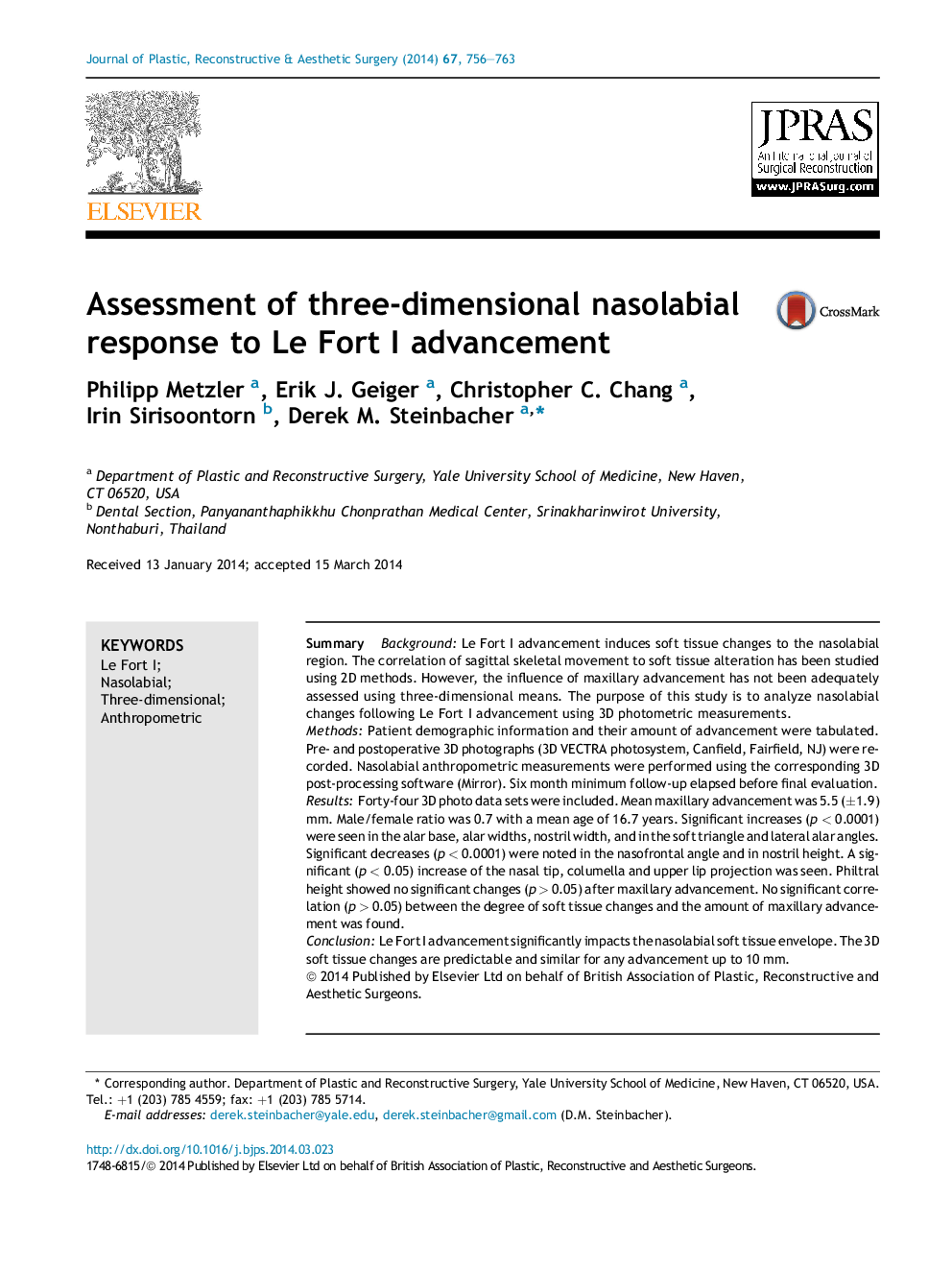| Article ID | Journal | Published Year | Pages | File Type |
|---|---|---|---|---|
| 4117339 | Journal of Plastic, Reconstructive & Aesthetic Surgery | 2014 | 8 Pages |
SummaryBackgroundLe Fort I advancement induces soft tissue changes to the nasolabial region. The correlation of sagittal skeletal movement to soft tissue alteration has been studied using 2D methods. However, the influence of maxillary advancement has not been adequately assessed using three-dimensional means. The purpose of this study is to analyze nasolabial changes following Le Fort I advancement using 3D photometric measurements.MethodsPatient demographic information and their amount of advancement were tabulated. Pre- and postoperative 3D photographs (3D VECTRA photosystem, Canfield, Fairfield, NJ) were recorded. Nasolabial anthropometric measurements were performed using the corresponding 3D post-processing software (Mirror). Six month minimum follow-up elapsed before final evaluation.ResultsForty-four 3D photo data sets were included. Mean maxillary advancement was 5.5 (±1.9) mm. Male/female ratio was 0.7 with a mean age of 16.7 years. Significant increases (p < 0.0001) were seen in the alar base, alar widths, nostril width, and in the soft triangle and lateral alar angles. Significant decreases (p < 0.0001) were noted in the nasofrontal angle and in nostril height. A significant (p < 0.05) increase of the nasal tip, columella and upper lip projection was seen. Philtral height showed no significant changes (p > 0.05) after maxillary advancement. No significant correlation (p > 0.05) between the degree of soft tissue changes and the amount of maxillary advancement was found.ConclusionLe Fort I advancement significantly impacts the nasolabial soft tissue envelope. The 3D soft tissue changes are predictable and similar for any advancement up to 10 mm.
